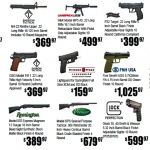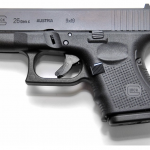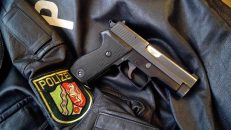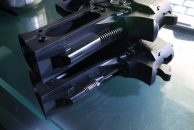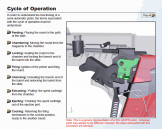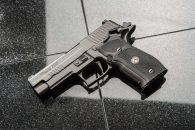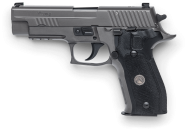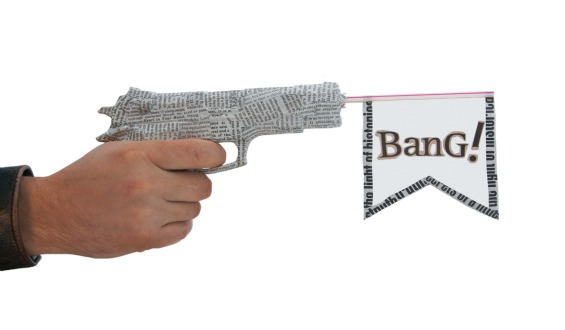
When talking about handgun trigger movements, it’s sometimes hard to keep all the terms and definitions straight. I’ll often see questions like “what’s the difference between take-up and creep?” So this quick-reference article will help you understand the differences and always have the correct terms handy. Of course, keep in mind that handgun trigger actions come in various forms (single-action, double-action, DA/SA, striker, etc.), so some terms may only apply to specific types of actions.
For the TL;DR crowd, the sequence goes: Pre-Travel (Take-Up > Wall > Creep) > Break > Over-Travel > Reset.
And for those who’d like a bit more explanation of these terms, read on!
Trigger Pre-Travel
The term Pre-Travel often gets confused with Trigger Take-Up (also called Trigger Slack), though they are actually not the same thing.
Technically, Pre-Travel is any amount of trigger movement from the trigger’s initial resting position up until the point that the sear breaks and causes the gun to go “bang.”
Take-Up, the Wall, and Creep are all part of Pre-Travel, so when correctly using the term Pre-Travel, you’d be referring to the combination of those three elements.
Trigger Take-Up (aka Slack)
Technically: Part of the Pre-Travel phase, Take-Up is any “positive” (pulling the trigger toward you) movement of the trigger that does not cause the sear to move and does not engage the mainspring.
What You Feel: The initial movement from the trigger’s resting position up to the point where you feel resistance (the Wall).
The Wall
Technically: Part of the Pre-Travel phase, the Wall is the point where the trigger action first engages the resistance of the sear.
What You Feel: The initial resistance of the sear, which is under load from the mainspring. It requires you to add more pounds of pulling force via your trigger finger to defeat and achieve the Break.
Trigger Creep
Technically: Part of the Pre-Travel phase, and in contrast to Take-Up, Trigger Creep is any positive movement of the trigger that does cause the sear to move and does engage the mainspring.
What You Feel: As you apply additional pulling force at the Wall, the mainspring starts to compress and the sear starts to move.
As the trigger creeps, you may be able to feel “steps” (inconsistent movements in the sear) as the sear creeps and stops suddenly, which requires you to add additional pulling force to reach the Break. The existence of steps are an indicator of what’s called Trigger Stacking. Trigger Stacking can refer to anything that increases the resistance of the trigger the farther back you pull. Most triggers exhibit some amount of stacking, even if imperceptible, but a trigger that exhibits a noticeable need to pull increasingly harder and harder as you approach the Break is said to have “stacking issues.”
Though usually referenced in negative terms, Trigger Creep itself is not necessarily a bad thing. The double-action pull on a DA/SA semi-auto (like a SIG P-Series) or on a double-action revolver is, by design, all Creep. The smoothness (meaning the absence of steps or stacking) of the pull throughout the creep phase is what indicates the quality of the action… not the amount of Creep itself. Double-action triggers, or the DA phase of a DA/SA trigger, are the most susceptible to stacking issues.
When you hear shooters talk about a “gritty” or “mushy” trigger, that usually means it has an inconsistent and unpredictable Creep with multiple steps. A “smooth” trigger experiences no steps or perceivable stacking.
Trigger Break (aka Release)
Technically: The point of the trigger action where the sear releases the hammer (or the striker, depending on the type of action).
What You Hear and Feel: If the gun is loaded, you’d hear a “bang” and feel an amount of recoil commensurate with the type of round. If the gun isn’t loaded, you’d hear a “click” and feel a small vibration as the mainspring releases its force causing the hammer to fall or the striker to thrust forward.
When you hear shooters talk about a “crisp” or “clean” Break, that usually means that the Break occurs without any (or at least very little) noticeable Creep.
Trigger Over-Travel
Technically: Over-Travel is any amount of “positive” trigger movement following the Break.
What You Feel: Continued “positive” movement of the trigger after the Break, without much (if any) resistance, until something mechanically stops the trigger’s positive movement.
If the frame is what stops the Over-Travel, you’ll often see a small mark on the frame where the rear of the trigger hits the frame at the end of Over-Travel. This is common on some SIG P-Series pistols.
Any mechanical device that stops Over-Travel is called a “trigger stop.” Some are adjustable to allow the shooter to control the amount of Over-Travel, and some are fixed. Trigger stops can be mounted on the rear of the trigger itself:

Trigger-mounted trigger stop on a S&W 500
Or on the frame somewhere behind the trigger:
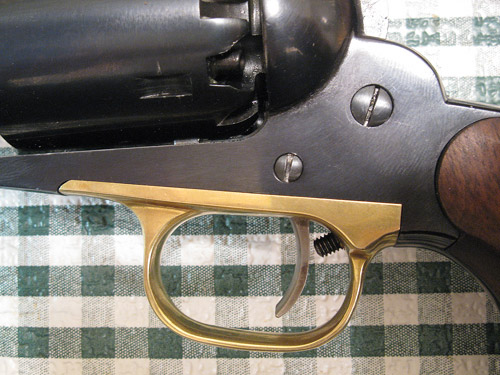
Frame-mounted adjustable trigger stop
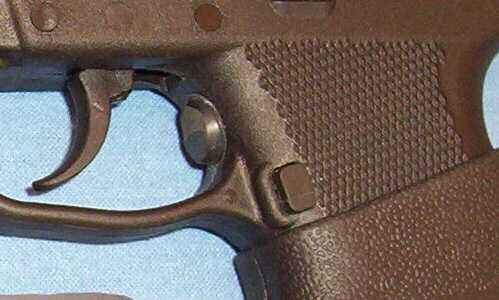
Frame-mounted trigger stop
Or even on the trigger so that it stops against the inside of the frame, as with the Grayguns P-Series Adjustable Intermediate Trigger (P-SAIT):
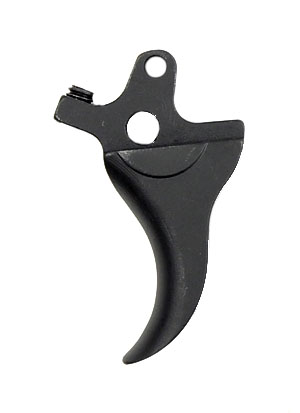
Grayguns P-SAIT trigger
Trigger Reset
Technically: Trigger Reset is the “negative” (trigger moves away from you) or “forward” movement of the trigger to the point that the trigger or trigger bar re-engages the sear (or the striker, depending on the type of action). Another way to think of this is that it’s the motion required for the trigger mechanism to overcome the action of the disconnector which, during semi-auto cycling, has disconnected the trigger from the sear.
What You Feel: You don’t have to exert any force on the trigger for it to reset, and you’ll feel the pressure of the spring(s) responsible for returning the trigger to its re-engagement point gently pushing against your finger until the sear re-engages.
When you hear shooters talking about a “snappy” Reset, they’re referring to an action that resets quickly. A “sluggish” Reset is one that happens slowly.
The speed and length of the Reset contribute to how quickly follow-up shots can be taken. With a DA/SA action, the Reset returns the trigger to a single-action position, so the mainspring is already compressed. Ideally, there would be minimal Creep for a follow-up single-action shot from this position. Alternatively, you could remove pressure from the trigger and ideally experience no additional “negative” or forward movement of the trigger. However, that’s not always what happens, and releasing all finger pressure from the trigger will often allow the trigger to continue forward, creating a minimal amount of single-action Take-Up (though not anywhere near as much as with a double-action shot). Custom action work is often required to minimize or remove this altogether.
Some manufactures offer kits which can drastically reduce the length of the Reset via a modified sear and safety lever, such as the SIG Sauer Short Reset Trigger Kit (SRT Kit).
Putting It All Together
Hopefully, this reference guide has helped you better understand the terminology commonly used when referring to trigger actions, and can help you better analyze and understand your own shooting. To sum up again for the TL;DR crowd who may have just skipped to the bottom of the article to find something to copy and paste into a discussion forum or Facebook post, the sequence goes:
Pre-Travel > Break > Over-Travel > Reset
By expanding the Pre-Travel section, we’d get:
Pre-Travel = (Take-Up > Wall > Creep) > Break > Over-Travel > Reset
And if we add in all the common synonyms, we’d get:
Pre-Travel = (Take-Up = Slack > Wall > Creep) > Break = Release > Over-Travel > Reset
Feel free to refer to this guide or the above abbreviated versions when discussing trigger actions. And as always, I welcome your questions, comments, suggested corrections, or feedback below.

